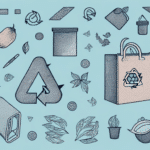Understanding Eco-Friendly Boxes
As environmental consciousness grows among consumers, businesses are increasingly adopting sustainable practices. One of the most impactful steps is transitioning to eco-friendly boxes for packaging and shipping. Also known as sustainable or green boxes, these packaging solutions are crafted from materials that have minimal environmental impact, such as biodegradable, recyclable, or compostable substances.
Eco-friendly boxes are manufactured using processes that optimize energy usage and reduce carbon emissions. This not only aids in environmental preservation but also enhances a company's reputation as a responsible and forward-thinking organization.
Benefits of Using Eco-Friendly Boxes
Environmental Impact
Transitioning to eco-friendly boxes significantly reduces a company's carbon footprint. According to the Environmental Protection Agency (EPA), sustainable packaging can decrease waste sent to landfills and lower greenhouse gas emissions.
Consumer Appeal
Today's consumers are more environmentally conscious and prefer brands that prioritize sustainability. Utilizing eco-friendly packaging can attract and retain customers who value environmental responsibility, thereby enhancing brand loyalty and trust.
Cost Efficiency
While the initial costs of eco-friendly boxes may be higher, they offer long-term savings. Recyclable and reusable materials reduce the need for constant repurchasing of packaging supplies, and lighter materials can lower shipping costs.
Types of Eco-Friendly Boxes
Recycled Cardboard Boxes
Made from post-consumer waste, recycled cardboard boxes are sturdy and suitable for shipping heavy or bulky items. They can be easily recycled again, promoting a closed-loop system.
Biodegradable Plastic Boxes
These boxes are derived from renewable resources like corn or potato starch. They break down naturally over time, reducing plastic pollution and environmental harm.
Compostable Boxes
Crafted from natural materials such as bamboo, sugarcane, or wheat straw, compostable boxes decompose into nutrient-rich compost. This process supports soil health and reduces landfill waste.
Reusable Packaging
Durable materials like metal or hard plastic are used to create reusable boxes. These containers can be used multiple times, eliminating the need for single-use packaging and further minimizing waste.
Sustainable Manufacturing Practices
The production of eco-friendly boxes involves sustainable manufacturing techniques that prioritize energy efficiency and reduced emissions. For instance, using certified sustainable materials ensures that the resources are sourced responsibly. Additionally, implementing energy-efficient machinery and renewable energy sources during manufacturing processes can significantly lower the environmental footprint.
Cost Comparison: Eco-Friendly vs Traditional Boxes
While eco-friendly boxes may have a higher upfront cost compared to traditional packaging, they offer substantial long-term financial benefits. Reduced disposal fees, lower shipping costs due to lighter materials, and the potential for tax incentives related to sustainable practices contribute to overall cost savings. Furthermore, the enhanced brand reputation can lead to increased sales and customer loyalty, offsetting the initial investment.
According to a report by Forbes, businesses that adopt sustainable packaging solutions experience an average of 15% reduction in packaging costs over five years.
Choosing the Right Eco-Friendly Packaging
Assessing Product Requirements
Selecting the appropriate eco-friendly box depends on the size, weight, and fragility of the product. For heavy items, recycled cardboard is ideal, while biodegradable plastics are suitable for moisture-sensitive products.
Evaluating Material Sustainability
Businesses should consider the sustainability of the materials used. Opting for certified compostable or recyclable materials ensures that the packaging can be properly disposed of, minimizing environmental impact.
Ensuring Durability
The packaging must protect the product during transit. Durable materials that can withstand shipping conditions without breaking or causing damage are essential for maintaining product integrity and customer satisfaction.
The Future of Sustainable Packaging
The sustainable packaging industry is rapidly evolving, with innovations aimed at enhancing efficiency and reducing environmental impact. Emerging technologies include:
- Biodegradable Foam: Made from natural materials like cornstarch, biodegradable foam offers an eco-friendly alternative to traditional foam packaging, decomposing quickly in the environment.
- Edible Packaging: Utilizing materials such as seaweed, edible packaging can be consumed alongside the product, eliminating waste entirely.
- 3D Printing with Sustainable Materials: This technology allows for customized and efficient packaging solutions using biodegradable or recycled materials, reducing excess waste.
These advancements promise a more sustainable future for the packaging industry, aligning with global efforts to combat environmental challenges.
Conclusion: A Smart Choice for Businesses and the Planet
Adopting eco-friendly boxes is not only beneficial for the environment but also advantageous for businesses. It enhances brand image, attracts environmentally conscious consumers, and offers long-term cost savings. As sustainable practices become increasingly important, choosing eco-friendly packaging is a strategic decision that supports both business growth and planetary health.






















